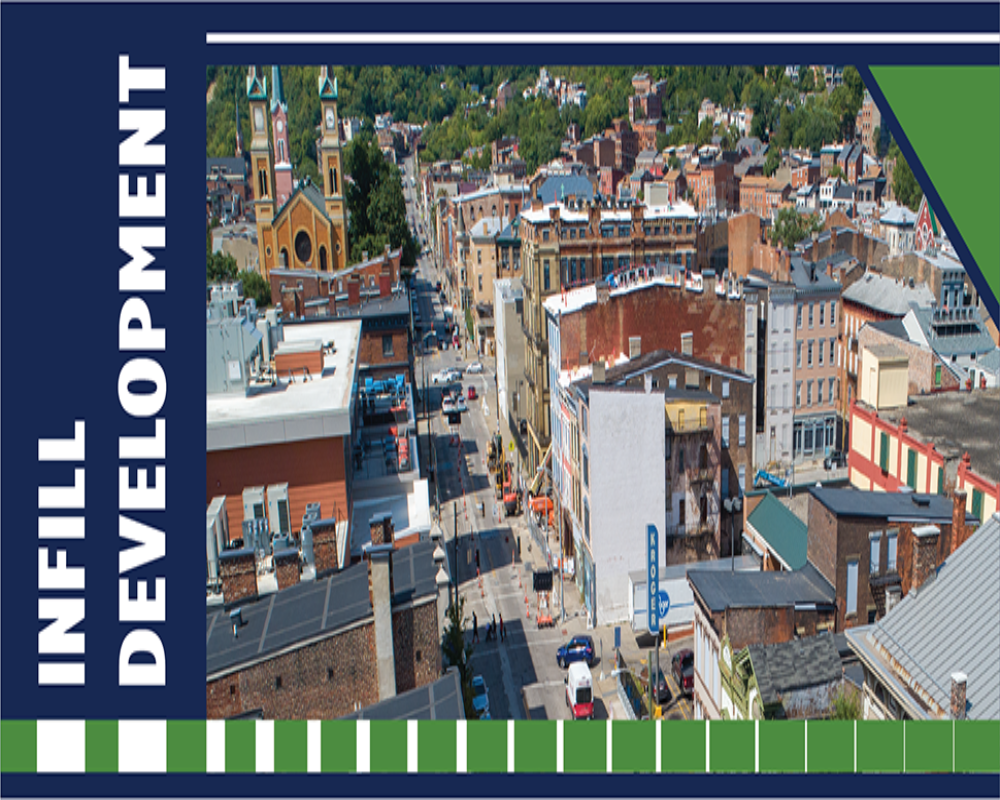Infill Development in Urban Commercial Zones
Introduction
Infill development refers to the process of developing vacant or underutilized parcels of land within already built-up urban areas. Rather than expanding outward into undeveloped or rural land, infill focuses on maximizing the potential of sites that are often overlooked—such as empty lots, surface parking areas, obsolete buildings, or underperforming properties located within city boundaries. In urban commercial zones, infill development plays a vital role in promoting economic revitalization, increasing land use efficiency, and supporting sustainable urban growth. It aligns with broader planning goals such as reducing urban sprawl, enhancing walkability, and leveraging existing infrastructure.
The Role of Infill in Urban Commercial Settings
In urban commercial zones, infill development typically targets spaces that can support new retail, office, mixed-use, or service-oriented establishments. These zones often have the advantages of high foot traffic, public transit access, and proximity to residential neighborhoods, making them ideal for commercial reinvestment. Infill projects might involve constructing a new commercial building on a vacant lot, converting an older structure into modern retail or office space, or integrating commercial uses into a mixed-use building that also includes residential units.
The demand for infill development in urban commercial areas is often driven by demographic changes, shifts in consumer behavior, and the need for economic stimulation in aging districts. For example, a declining strip mall may be replaced with a vibrant complex that blends retail, dining, and co-working spaces, thus rejuvenating the commercial corridor and drawing both businesses and consumers back into the area.
Advantages of Infill Development
One of the primary advantages of infill development is its efficiency. It utilizes existing infrastructure—such as roads, public transport, water and sewer systems, and electricity—thereby reducing the financial and environmental cost of extending new services. By focusing growth inward rather than outward, cities can curb land consumption and protect rural and natural areas.
Infill development also contributes to economic revitalization. It attracts investment, increases property values, and stimulates local businesses by introducing new uses and increasing consumer activity. In mixed-use infill projects, the integration of residential and commercial uses can generate continuous foot traffic and create more vibrant, 24-hour communities.
Additionally, infill supports sustainability by promoting higher densities, which enable more efficient land use and reduce dependency on cars. Compact development patterns support transit-oriented development (TOD), reduce greenhouse gas emissions, and foster walkable neighborhoods.
Challenges and Considerations
Despite its benefits, infill development in urban commercial zones comes with a unique set of challenges. One common issue is land fragmentation, where parcels are small, oddly shaped, or held by multiple owners, making acquisition and consolidation difficult. Developers may also face outdated zoning regulations that were not designed with higher-density or mixed-use development in mind. This can lead to lengthy permitting processes or the need for zoning variances.
Community resistance is another potential barrier, especially when infill projects involve increasing density or changing the character of an existing area. Concerns about traffic, parking, noise, and gentrification must be carefully managed through public engagement, transparent planning, and thoughtful design that reflects the needs and values of the local population.
Moreover, the cost of redevelopment in urban areas—such as demolishing existing structures, dealing with environmental contamination, or upgrading utilities—can be higher than building on undeveloped land. Financial incentives, public-private partnerships, and supportive local policies are often necessary to make infill development economically feasible.
Strategic Planning and Policy Support
Successful infill development depends on a coordinated planning approach that aligns with citywide goals. Municipalities can encourage infill by updating zoning codes to allow mixed-use and higher-density development, streamlining the permitting process, and offering financial incentives like tax credits, density bonuses, or infrastructure subsidies.
Urban design guidelines and form-based codes can help ensure that new infill projects are compatible with the character of existing neighborhoods while contributing to a high-quality public realm. Encouraging ground-floor commercial uses, pedestrian-friendly design, and integration with public transit are all strategies that enhance the success of infill in commercial zones.
Conclusion
Infill development in urban commercial zones represents a strategic response to the challenges of urban growth, land scarcity, and economic revitalization. By making use of underutilized spaces within the existing urban fabric, infill strengthens communities, enhances sustainability, and fosters economic opportunity. While it presents certain obstacles—such as regulatory complexity and community concerns—these can be overcome through proactive planning, community engagement, and supportive policy frameworks. As cities continue to grow and evolve, infill development will remain a central component of creating livable, vibrant, and resilient urban environments.
Hashtags
#InfillDevelopment #UrbanCommercialZones #SmartGrowth #SustainableCities #UrbanPlanning #CityRevitalization #MixedUseDevelopment #CommunityBuilding #UrbanDesign #EconomicDevelopment #SmartCities #UrbanDensity #GreenInfrastructure #WalkableCities #PublicSpaces #LocalBusiness #UrbanRenewal #TransitOrientedDevelopment #CityLiving #FutureOfCities


